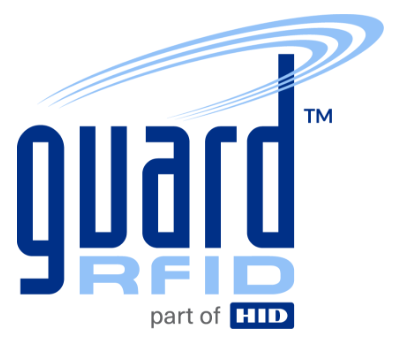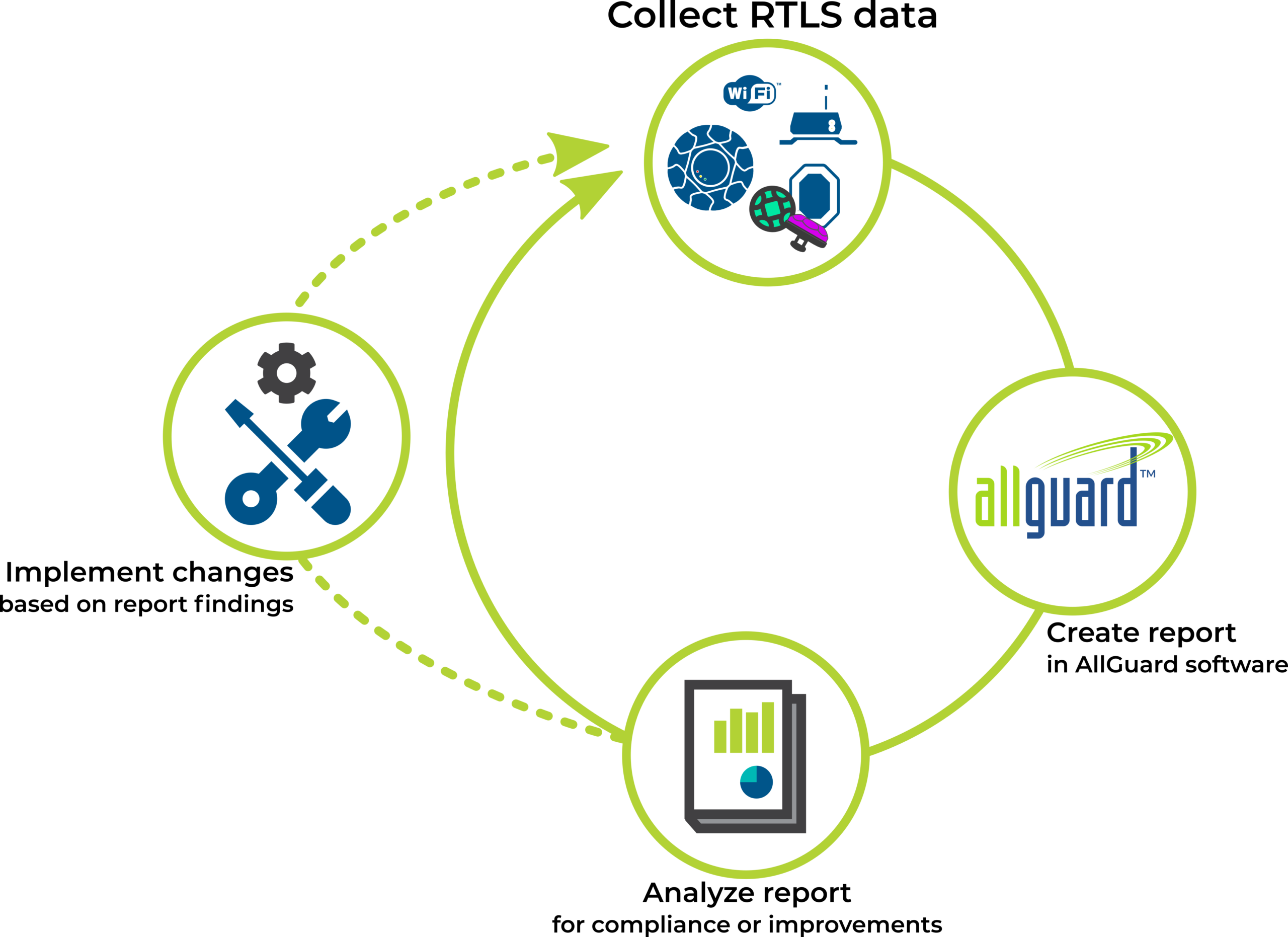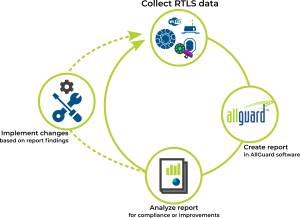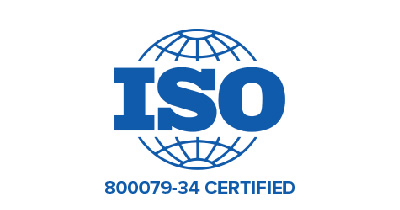Information is power. When data is gathered, analyzed, and most importantly, acted upon, meaningful changes can be made to improve how a facility operates. Real time locating systems (RTLS) enable organizations in the Healthcare, Industrial and Commercial industries to track and protect assets and equipment with RFID tags.
An RTLS software solution gathers rich sets of data relating to the location and position of tags, which can subsequently be used to create reports. These reports provide valuable insights into the organization, allowing management to take action based on accurate information.
Reports provide visibility
The GuardRFID® real time locating solution uses active RFID tags to locate, track and secure people and equipment, and is used in tandem with the GuardRFID AllGuard® Client software solution to collect useful data and create reports. The user accesses the system to view a live dashboard in the web client, and can use the desktop client to download reports.
There are a variety of different classes of reports. Managers may wish to access standard tag and tagholder reports at any time, create custom reports for unique views, or schedule specific reports to generate information on a regular basis and have it emailed right to their inbox.
The following use case examples outline some of the ways reports can make a measurable difference in improving facility operations and processes.
Audits
It may be desirable to complete a report that details which users have accessed the system or performed operations such as suspending tags or accepting alarms. By accepting an alarm, a staff member has acknowledged the event has happened, looked into the cause, and is working to resolve it. Audit reports can be used to do a review with staff of operational issues and alarm incidences.
Ensuring compliance
Some organizations designate certain areas of their facilities off-limits, with the exception of approved personnel. For instance, these areas may require staff have special training to enter if they pose a health hazard or security risk. The AllGuard system can be set up to ensure only authorized staff access certain rooms or areas in their facility. By generating a report that shows which employees accessed a restricted area, management can determine if staff and the company is maintaining compliance as per the company or regulatory rules and guidelines.
Using a report to do forensics
One of the primary reasons organizations employ an RTLS solution is to maintain the safety and security of people and equipment. However, sometimes critical incidents occur which cannot be prevented. In the case of an abduction of a healthcare patient or the theft of an expensive piece of equipment, the AllGuard system can produce a report that shows the path of the tag that is attached to the person or equipment, before and during the incident. This information assists in the investigation and recovery, and helps to re-create the event to determine how to prevent a recurrence.
Reducing false alarms
The benefit of providing added security also comes with the potential for false alarms. If the incidence of ‘nuisance’ alarms leads to staff complacency when it comes to an alarm signaling an actual crisis—this can lead to a weakening of the security system. By generating reports on alarm activity and events, management staff have the capability to identify any systemic contributors to false alarms and modify the system—or the way it is used—to reduce false alarms and ensure that real incidents are properly managed when they do occur.
Maintaining the system’s health
The AllGuard system includes hardware components such as readers, exciters, keypads and I/O modules. The solution has built-in health monitoring safeguards in the event that a component of infrastructure fails. Alarms are generated for severe events such as hardware failure or unexpected disconnection, but in some cases the components may ‘self-heal’. For example, if there is a power failure, the component will come back online when the power returns. When a report is generated detailing the health of the system and components, potential issues may be identified and proactively addressed before system failure occurs.
Managing tags in the system
For more efficient tag management, reports such as the tag expiration report can be used to forecast the annual tag budget. By reviewing previous tag usage and battery life, an accurate estimate for upcoming needs can be made.
Area utilization data
Facility management is one area that is realizing the reporting benefits of an RTLS solution. This use case is similar to the purpose of traffic counters for short-term surveys or long-term data collection, in order to plan for future roadworks. RFID tag location data can be used to chart traffic patterns of room or area occupancy. This data can then be used to influence, justify and plan facilities’ future planning projects.
Ultimately, RTLS solution reports are based on hard data rather than anecdotal evidence and provide important information for study and analysis. The purposeful review of data in reports is one more tool to be used in identifying many types of issues within a facility, and helps lead decision-makers toward improvements in an organization’s processes and systems.
For more information on how an RTLS solution will work for your organization, contact us for a free consultation.



